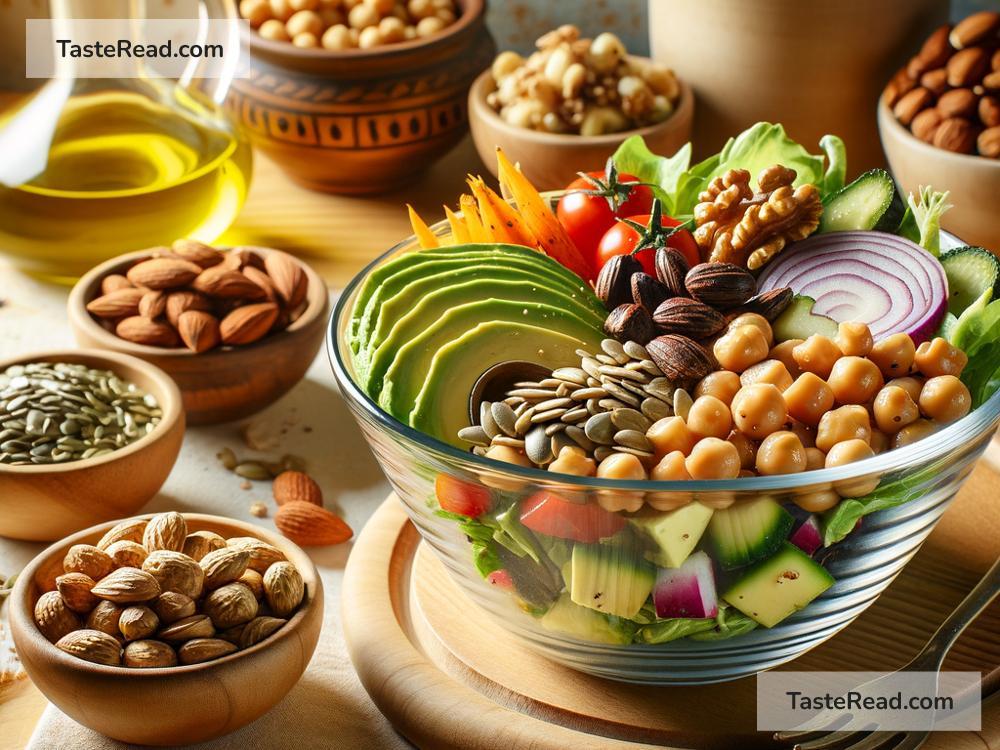How to Incorporate More β-Sitosterol-Rich Foods into Your Diet
It’s no secret that eating well can boost your health. But did you know that certain foods contain β-sitosterol (pronounced “beta-sitosterol”), a plant-based compound that could have some impressive benefits? This naturally occurring substance, found in fruits, vegetables, nuts, and seeds, is a type of plant sterol. It can help lower cholesterol levels, support prostate health, and might even aid immunity. Incorporating β-sitosterol-rich foods into your diet is easier than you think—and doing so could give your meals a healthy boost.
If you’re ready to take small steps toward improving your diet with β-sitosterol-rich foods, read on for simple, practical ideas!
What Is β-Sitosterol?
Before diving into tips, let’s quickly explain what β-sitosterol is. β-Sitosterol belongs to a group of compounds called phytosterols, which are found in plants. These substances are similar to cholesterol, but they work differently in your body. Phytosterols, including β-sitosterol, can compete with cholesterol in the digestive system, reducing the amount of “bad” cholesterol (LDL) absorbed from foods. This may support heart health and may also improve other aspects of your wellbeing. Although β-sitosterol isn’t a magic cure, regularly consuming it as part of a balanced diet can be beneficial.
Foods containing β-sitosterol are typically plant-based, meaning you have plenty of healthy and versatile options!
Tip #1: Snack on Nuts and Seeds
Nuts and seeds are powerhouses of nutrition and are rich in β-sitosterol. For example, almonds, pistachios, sunflower seeds, flaxseeds, and sesame seeds all contain this plant sterol. They also provide healthy fats, fiber, and other nutrients.
To incorporate nuts and seeds into your diet:
– Add a handful of nuts (like almonds or walnuts) to your morning oatmeal.
– Sprinkle flaxseeds or chia seeds on yogurt or smoothies.
– Keep a bag of mixed nuts and seeds on hand for quick snacks during the day.
Just remember: while nuts and seeds are nutritious, they’re also calorie-dense. Stick to reasonable serving sizes to avoid overdoing it.
Tip #2: Choose Foods Made with Whole Grains
Whole grains such as oats, wheat bran, and rye are great sources of β-sitosterol. Plus, they’re packed with fiber, which helps keep your digestive system healthy and can help you feel fuller for longer.
Here’s how you can add whole grains to your meals:
– Start your day with oatmeal or granola made from whole oats.
– Swap white bread and pasta for whole-grain versions.
– Try quinoa, barley, or bulgur instead of white rice for dinner.
Incorporating whole grains into your diet adds variety and boosts your intake of plant-based goodness, including β-sitosterol.
Tip #3: Enjoy More Fruits and Vegetables
Fruits and vegetables also provide β-sitosterol, along with vitamins, minerals, and antioxidants. Some of the best choices include avocados, oranges, berries, brussels sprouts, and broccoli.
Here are a few easy ways to increase your fruit and veggie intake:
– Add sliced avocado to salads, sandwiches, or tacos for a creamy, nutrient-dense boost.
– Snack on berries, apple slices, or orange wedges instead of processed snacks.
– Steam, sauté, or roast veggies like broccoli and brussels sprouts as a tasty side dish.
Mix and match your favorite fruits and vegetables to keep things fresh and exciting!
Tip #4: Go Plant-Based for Protein
β-Sitosterol is predominantly found in plant-based foods. Consider incorporating plant proteins, such as legumes (like lentils and chickpeas) and soy products (like tofu and edamame), which also offer rich sources of β-sitosterol.
Here’s how:
– Use lentils or black beans in soups, stews, or chili recipes.
– Swap out meat for tofu or tempeh in stir-fries or salads.
– Blend cooked chickpeas with tahini and garlic to make hummus as a healthy dip or spread.
Plant-based proteins are versatile, filling, and loaded with good-for-you nutrients.
Tip #5: Watch for Fortified Foods
Some foods, like certain spreads, juices, and cereals, are fortified with plant sterols, including β-sitosterol. These products can be a convenient way to increase your intake, especially if you’re looking to add more variety to your diet.
When shopping, check food labels for terms like “plant sterols” or “phytosterols.” Opt for options with reasonable amounts of added sugars and fats to keep things healthy.
Tip #6: Try Cooking with Healthy Oils
Plant oils like olive oil, canola oil, and avocado oil contain β-sitosterol and can easily be used in cooking, dressings, or dips. These oils also provide healthy fats that can benefit your overall health.
Incorporate healthy oils into your diet by:
– Drizzling olive oil over salads, steamed vegetables, or whole-grain pasta.
– Using avocado oil for sautéing or roasting vegetables.
– Making homemade salad dressing with olive oil, lemon juice, and herbs.
Simple substitutions like these can make a big impact on both flavor and nutrition.
Small Changes, Big Benefits
Adding more β-sitosterol-rich foods to your diet doesn’t mean you have to overhaul everything overnight. Start by making small swaps, experimenting with new recipes, and discovering foods you genuinely enjoy. Whether it’s snacking on nuts, upping your veggie game, or switching to whole grains, these changes can help you build a more plant-forward and nutrient-dense diet.
Remember, food is about nourishment and enjoyment—and β-sitosterol-rich foods can be both tasty and beneficial. Start incorporating them today for a healthier tomorrow!


